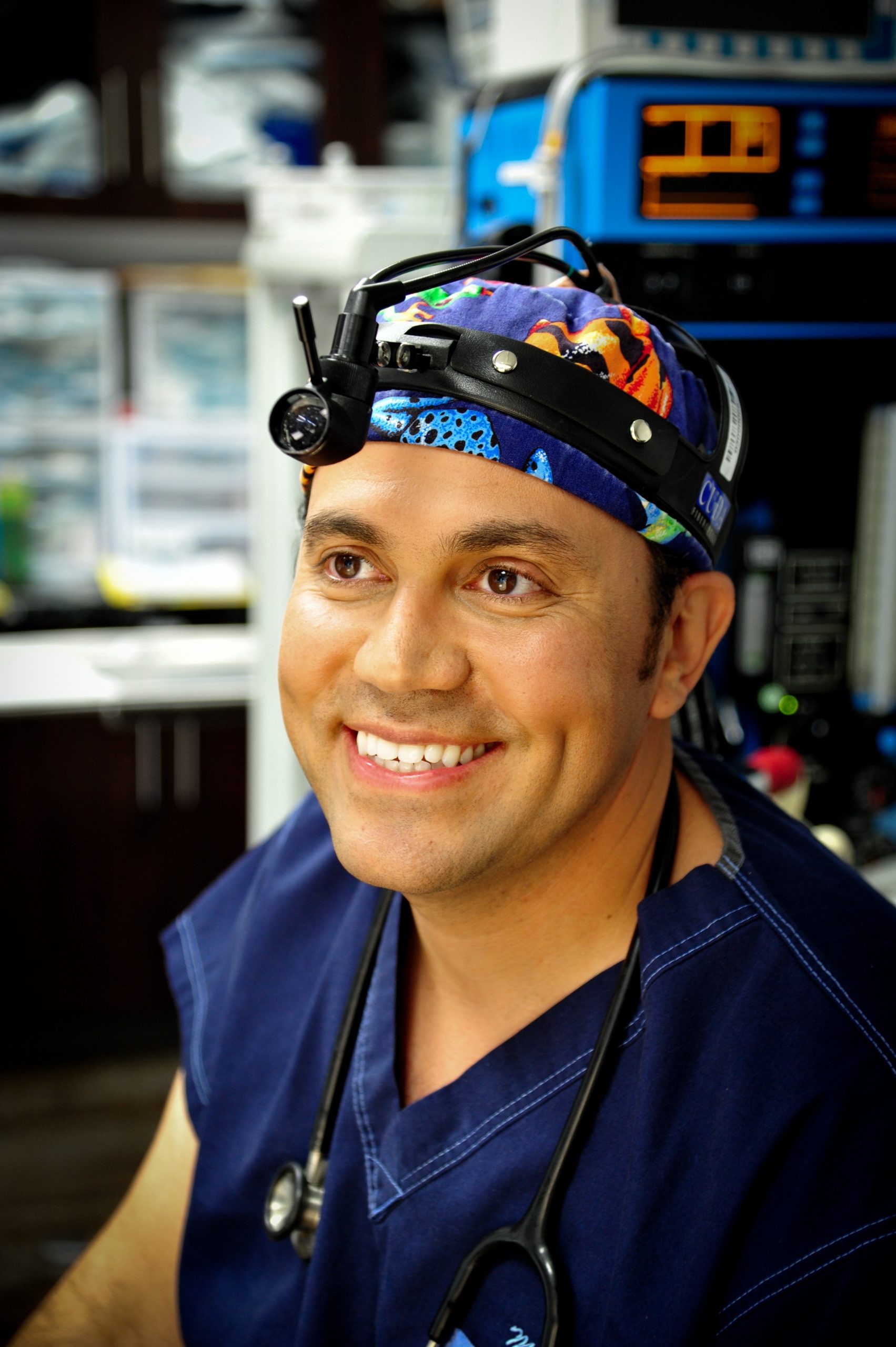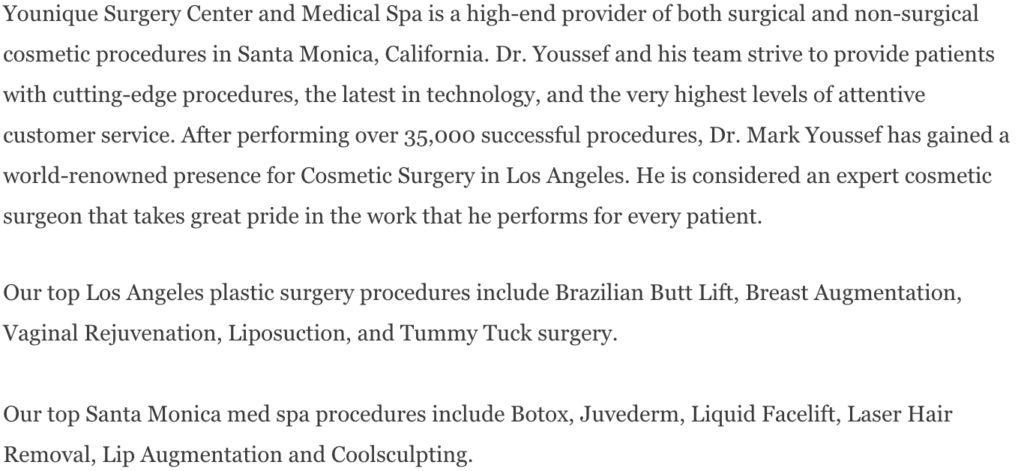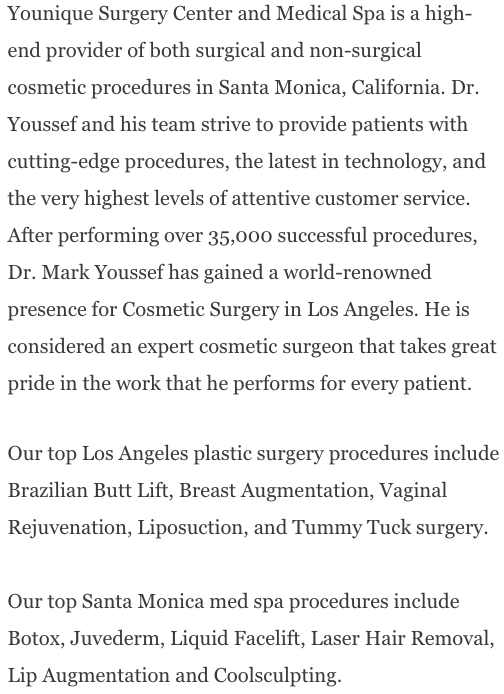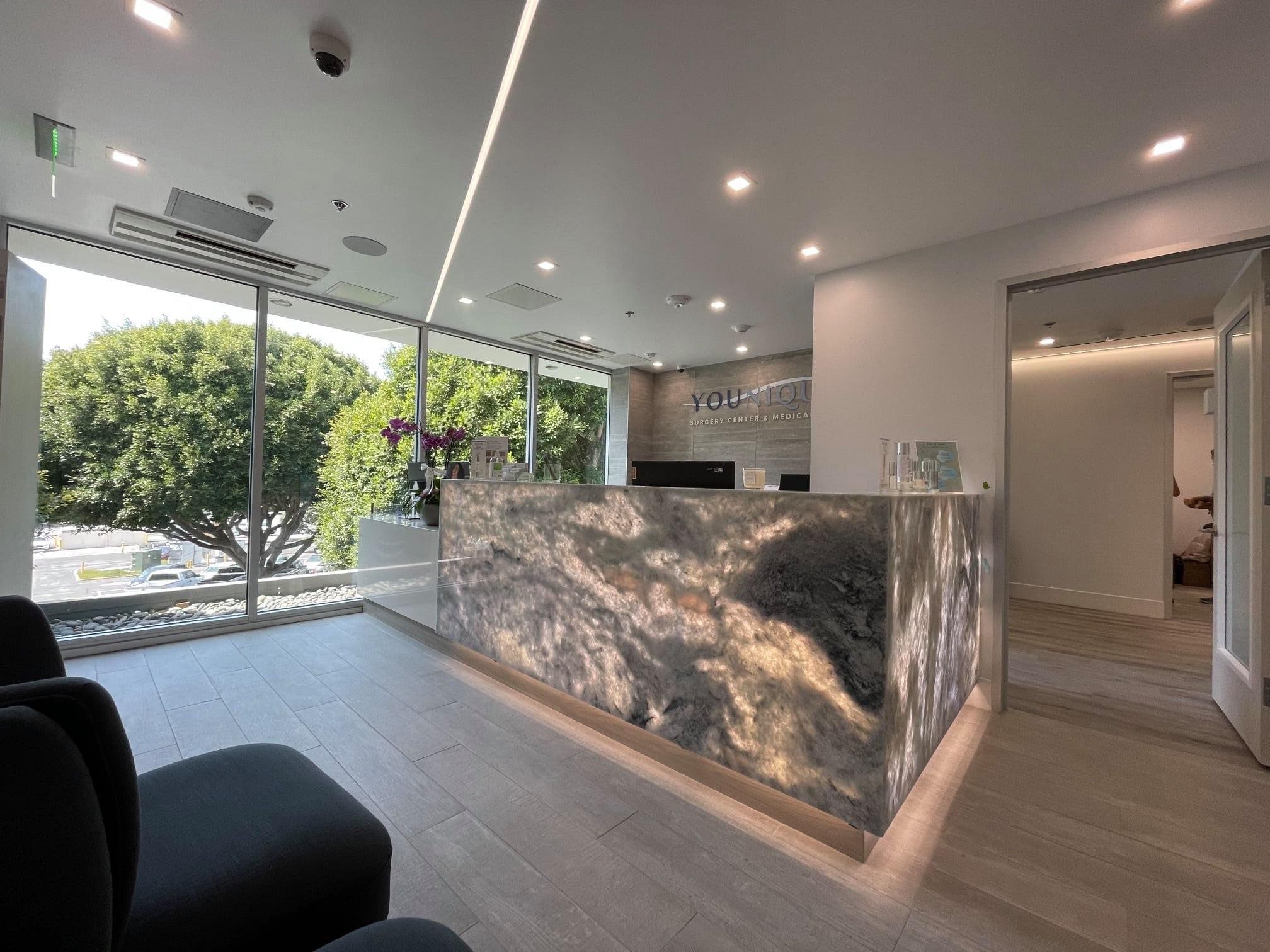
Botox For Migraines
Medically Reviewed by Mark Youssef, MD 5 stars from 103 reviews
Botox Injections for Migraines
Botox is most commonly known as a treatment for wrinkles, but it also has many other cosmetic and medical uses, including the treatment of chronic migraines.
There are many things that can trigger migraines. Some triggers are internal, such as hormonal changes or dehydration, and some triggers are external, such as weather changes or a change in routine. Chronic migraines usually cause very painful headaches as well as other debilitating symptoms that inhibit a person’s quality of life, like nausea, vomiting and sensitivity to light.
Botox for migraines isn’t meant to completely eliminate all symptoms, though it may be highly effective at reducing the frequency and severity of migraines. It’s usually given as a series of injections, and positive results are often noticeable after two sessions over six months.
The use of Botox for migraines was an accidental discovery but it likely works by altering how pain signals are sent between the brain and various nerve endings. In addition to reduced number of migraines and intensity of pain, patients often experience less sensitivity to triggers, a better response to acute migraine treatments and improved quality of life.
Some side effects from treatment can occur, and some can be life-threatening, so it’s crucial that the treatment is performed by a qualified medical professional.
- Botox Injections for Migraines
- What is a migraine?
- Who is a good candidate for Botox for migraines?
- Botox Migraines Treatment
- What happens when you get Botox injections for migraines?
- What are the results of Botox for migraines?
- Botox for migraines side effects
- MEET OUR DOCTOR
- Are You Ready For The Next Step?
What is a migraine?
Many people think having a migraine (or simply migraine) is the same as having a bad headache, but this isn’t exactly true. Migraine is a neurological condition that is most often painful and may cause many other symptoms.
There are several types of migraines, and each type has different features. One person’s migraine isn’t necessarily the same as another person’s migraine. Sometimes they don’t cause headaches at all!
Symptoms of Migraine
Symptoms of migraine are often debilitating and may affect multiple areas of your body. Common symptoms include:
- Intense pain
- Nausea
- Vomiting
- Sensitivity to lights, sounds or smells
- Extreme fatigue
- Problems with speech or balance
- Visual disturbances or loss of vision
Migraine Triggers
Migraine triggers are factors — either internal or external — which increase your chances of experiencing migraine. A migraine is usually caused by multiple triggers occurring at the same time.
Common migraine triggers include:
- Certain foods, such as chocolate, cheese, citrus fruits and dairy
- Alcohol
- Skipped meals
- Dehydration
- Caffeine
- Lack of adequate sleep
- Change in routine, such as weekends or holidays
- Stress
- Weather changes
- Computers
- Infrequent exercise
- Illness
- Hormones
- Poor posture
- Teeth and jaw behaviors, such as teeth-grinding or chewing gum
Who is a good candidate for Botox for migraines?
Botox is only used to treat chronic migraines.
In 2010, the FDA approved the use of Botox for migraines in patients who experience headaches for 15 days or more each month for at least three months. They have to be migraine headaches for at least eight of those 15 days each month. The rest of the headaches can be tension-type headaches.
Botox Migraines Treatment
It is not known for sure exactly how Botox injections treat migraines. The discovery of Botox for migraines happened by chance. Patients with chronic headaches who also received cosmetic Botox seemed to experience an improvement in the frequency and severity of their headaches. This prompted researchers to find out if it could be used as an effective treatment for chronic migraines.
Botox is thought to affect the tiny nerve endings that send pain signals to the brain. It interrupts the signal and reduces the amount and frequency of pain.
What happens when you get Botox injections for migraines?
One session of Botox injections for migraines usually takes less than 20 minutes. Your doctor may use 30-40 injections in total in these seven muscles in the head and neck:
- Frontalis: The forehead
- Temporalis: On each side of the head and used for chewing food
- Corrugator: The inner end of each eyebrow
- Procerus: Between the eyebrows
- Occipitalis: The back of the skull
- Trapezius: The back of the neck and upper back
- Cervical paraspinal muscle group: The top and back of the neck, around the spine
Your doctor may decide to target different muscle groups depending on where your headache is located. You may experience some discomfort or mild pain from the pinpricks, but most patients find it tolerable.
Patients usually require more than one session 12 weeks apart to effectively treat their migraines. It may take up to six months before you feel the effect off the treatment but you might notice an improvement a few weeks after your first treatment.
What are the results of Botox for migraines?
Botox isn’t expected to completely eliminate migraines. The ideal result is a significant improvement in the frequency and severity of migraines.
Studies show that more than 50% of patients noticed at least a 50% improvement in frequency after two sessions over six months. Close to 25% of the patients studied noticed a 75% improvement.
Botox injections for migraines may have other positive effects on patients:
- Are less sensitive to migraine triggers
- Have less severe migraine attacks
- Migraines respond better to acute treatments
- Baseline head or neck pain is less intense
- Improved overall quality of life
Botox for migraines side effects
Patients may experience side effects from Botox treatments:
- Increased skin tightness
- Muscle weakness
- Eye drooping
- Sore or stiff neck
- Strange skin sensations
Botox injections for migraines must be done by a qualified professional. If not done properly, you could experience facial drooping until it wears off, which can take a few months.
It’s possible — though unlikely — for serious effects to occur as a result of a sensitivity to Botox, receiving a very high dose or the Botox spreading beyond the muscle it’s injected into.
These reactions require immediate medical attention:
- Trouble with breathing, speaking or swallowing
- Inability to open one or both eyes
- Blurred vision
- Slurred speech
- Raspy voice
If you have any questions about receiving Botox for migraines, or if you want to book an appointment for treatment, contact Younique Surgery Center & Medical Spa or call 310-434-0044.
MEET OUR DOCTOR

Dr. Mark Youssef










